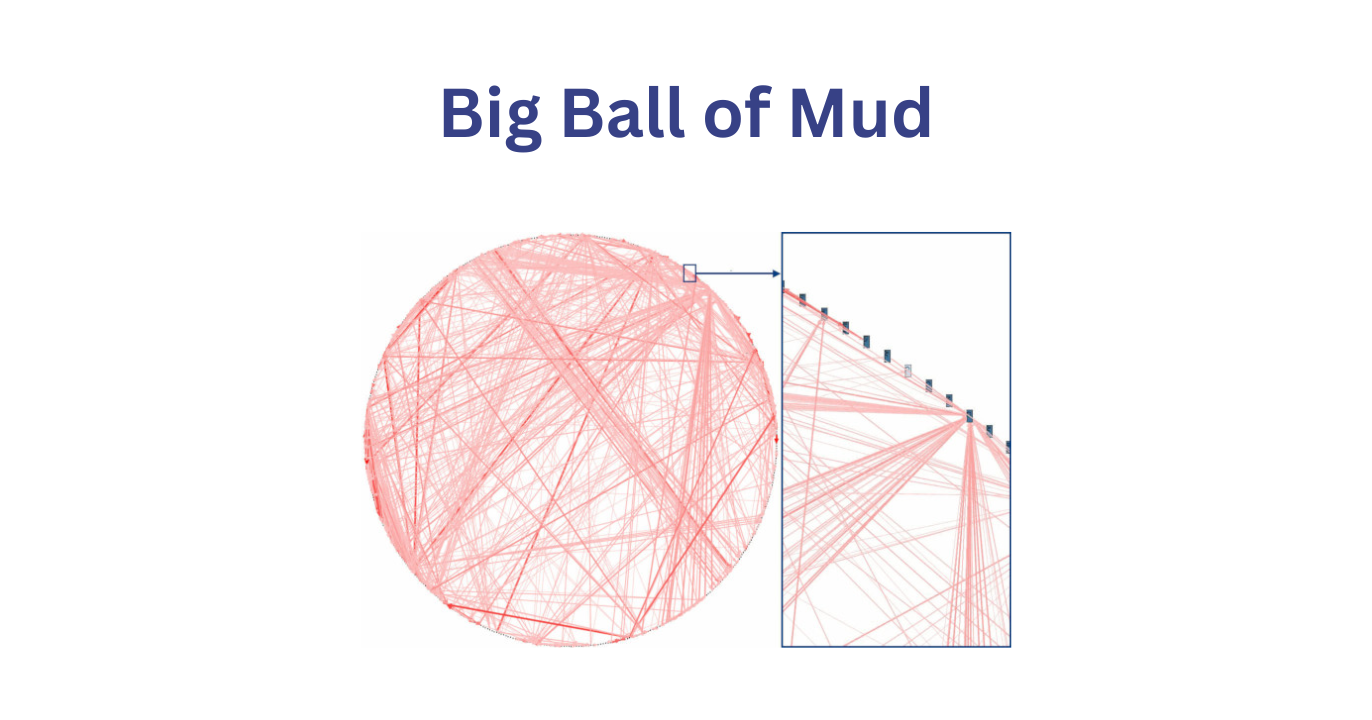Big Ball of Mud
A “Big Ball of Mud” is a software system that lacks a clear architecture. It’s characterized by a codebase that has grown organically without clear structure, where components are tightly coupled, and where changes in one area can unexpectedly affect others.
The term “Big Ball of Mud” was coined by Brian Foote and Joseph Yoder in their influential 1999 paper.
Key Characteristics
- Highly tangled, spaghetti-like code organization
- Lack of clear separation between components
- Inconsistent or non-existent architectural patterns
- Difficulty understanding how different parts interact
- High cognitive load for developers working on the system
Common Causes
Time Pressure: Deadlines forcing quick, suboptimal solutions
Technical Debt Accumulation: Small compromises that build up over time
Lack of Architectural Vision: No clear initial design or architectural guidelines
Knowledge Silos: Different developers implementing their own approaches without collaboration
Feature Creep: Continually adding features without refactoring
Unclear Requirements: Building for moving targets leads to ad-hoc solutions
Staff Turnover: Loss of institutional knowledge about system design
Insufficient Testing: Without good test coverage, developers fear making structural changes
Solutions
- Incremental Refactoring:
- Identify high-value areas to improve first
- Use the “Boy Scout Rule” - leave code better than you found it
- Establish clear architectural boundaries gradually
- Introduce Architectural Patterns:
- Layer the application (presentation, business logic, data access)
- Implement domain-driven design concepts
- Adopt microservices where appropriate
- Improve Testing:
- Build comprehensive test suites to enable safe refactoring
- Focus on integration and system tests to verify behavior during restructuring
- Documentation:
- Document the current state and the target architecture
- Create architectural decision records (ADRs) to track decisions
- Team Practices:
- Implement code reviews focused on architectural concerns
- Pair programming to share knowledge
- Create architectural guidelines for new code
- Technical Leadership:
- Assign an architecture owner/team
- Allocate specific time for architectural improvements
- Get management buy-in for refactoring efforts
The key to addressing a Big Ball of Mud is recognizing that it can’t be fixed overnight. Successful remediation typically involves incremental improvement combined with discipline to prevent regression to poor practices.
